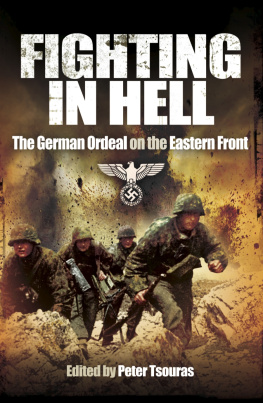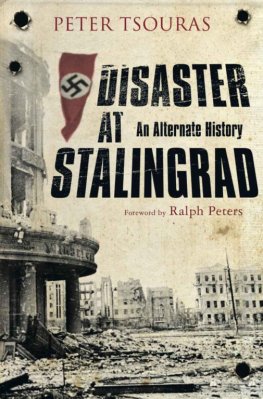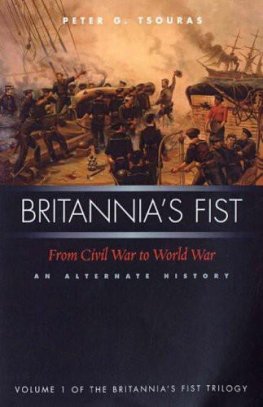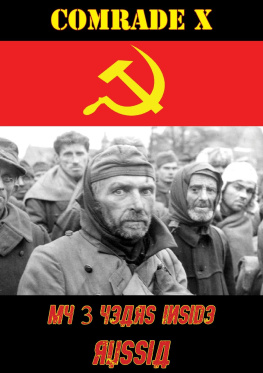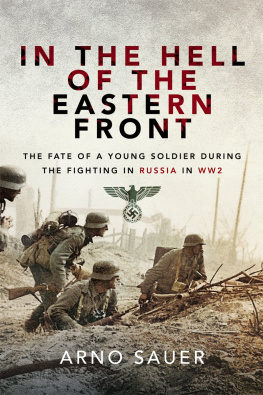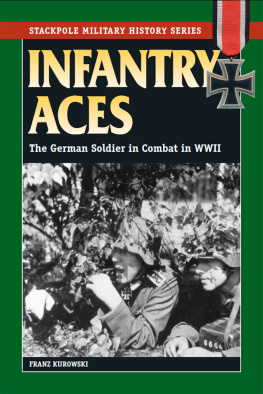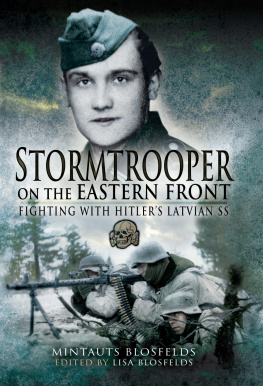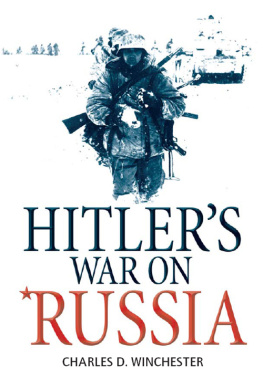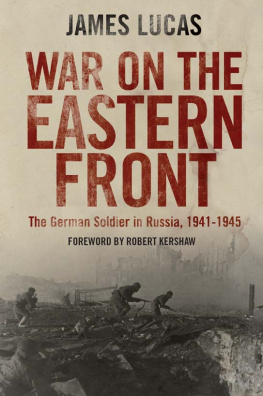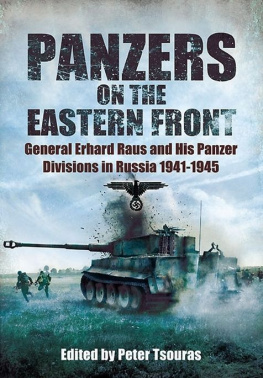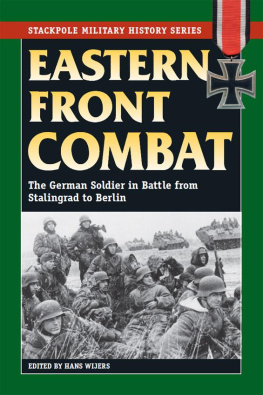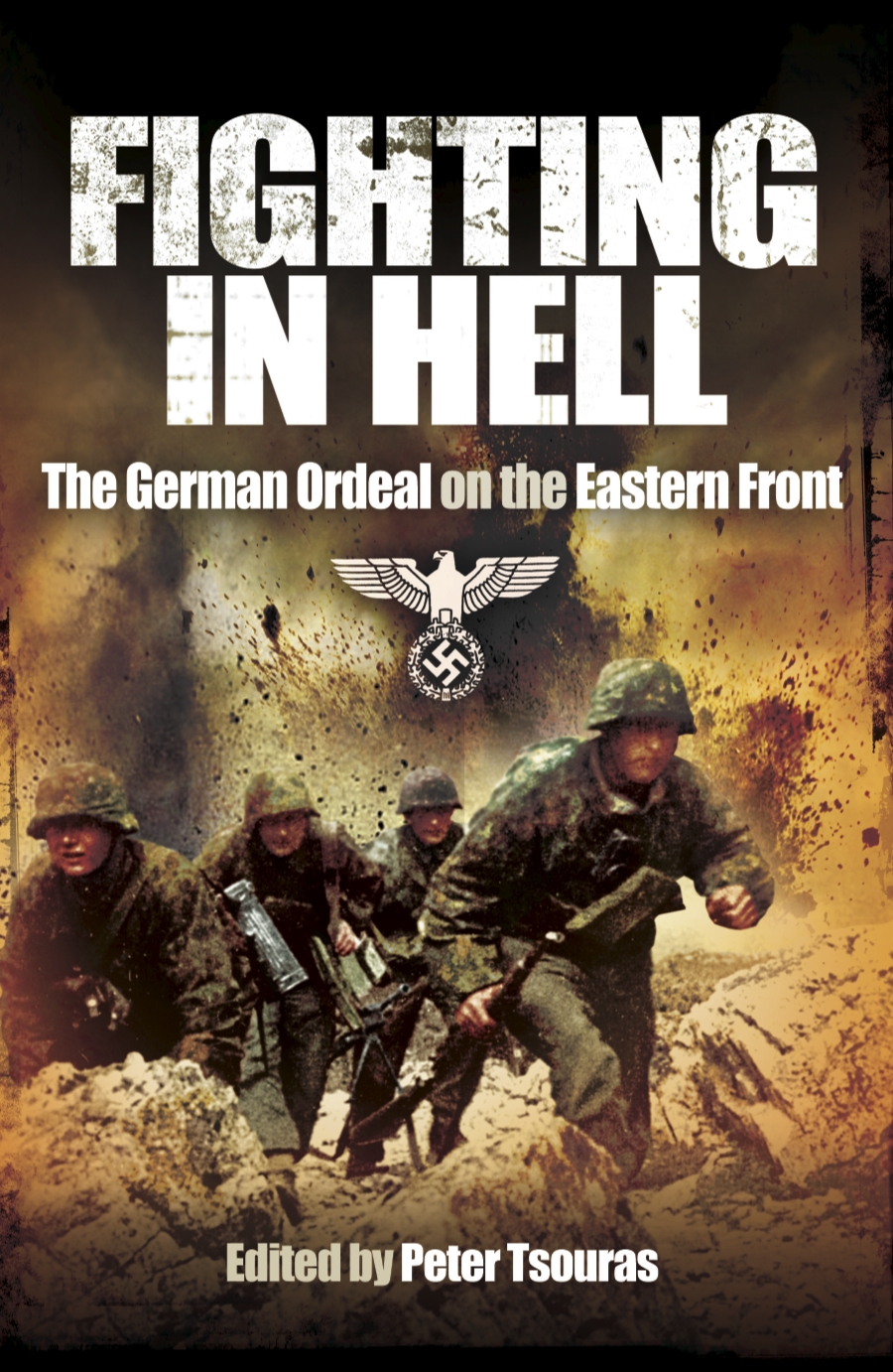Peter Tsouras - Fighting in Hell: The German Ordeal on the Eastern Front
Here you can read online Peter Tsouras - Fighting in Hell: The German Ordeal on the Eastern Front full text of the book (entire story) in english for free. Download pdf and epub, get meaning, cover and reviews about this ebook. year: 2012, publisher: Pen & Sword Books, genre: Non-fiction. Description of the work, (preface) as well as reviews are available. Best literature library LitArk.com created for fans of good reading and offers a wide selection of genres:
Romance novel
Science fiction
Adventure
Detective
Science
History
Home and family
Prose
Art
Politics
Computer
Non-fiction
Religion
Business
Children
Humor
Choose a favorite category and find really read worthwhile books. Enjoy immersion in the world of imagination, feel the emotions of the characters or learn something new for yourself, make an fascinating discovery.
- Book:Fighting in Hell: The German Ordeal on the Eastern Front
- Author:
- Publisher:Pen & Sword Books
- Genre:
- Year:2012
- Rating:3 / 5
- Favourites:Add to favourites
- Your mark:
Fighting in Hell: The German Ordeal on the Eastern Front: summary, description and annotation
We offer to read an annotation, description, summary or preface (depends on what the author of the book "Fighting in Hell: The German Ordeal on the Eastern Front" wrote himself). If you haven't found the necessary information about the book — write in the comments, we will try to find it.
The German war in Russia was so brutal in all its extremes that all past experiences paled beside it. Everything in Russiathe land, the climate, the distances and above all the peoplewere harder, harsher, more unforgiving and more deadly than anything the German soldier had ever faced before. One panzer-grenadier who fought in the West and in Russia summed it up: In the West war was the same honourable old game; nobody went out of his way to be vicious, and fighting stopped often by five in the afternoon. But in the East, the Russians were trying to kill youall the time.The four detailed reports of campaigning in Russia included in this invaluable book (Russian Combat Methods in WWII, Effects of Climate on Combat in European Russia, Combat in Russian Forests and Swamps and Warfare in the Far North) were written in the late 1940s and early 1950s, as part of the US Army programme to record the German strategies and tactics of World War II directly from the commanders. The authors were all veterans of the fighting they described, and frankly admitted that the soldiers sent to Russia were neither trained nor equipped to withstand the full fury of the elements there. The German high command had been under the impression that the Red Army could be destroyed west of the Dnepr, and there would be no need for conducting operations in cold, snow and mud. Fighting in Hell shows what really happened, through first-hand accounts of the commanders who were there.
Peter Tsouras: author's other books
Who wrote Fighting in Hell: The German Ordeal on the Eastern Front? Find out the surname, the name of the author of the book and a list of all author's works by series.

